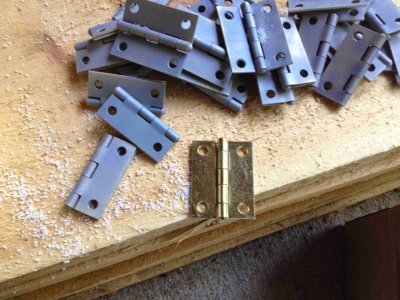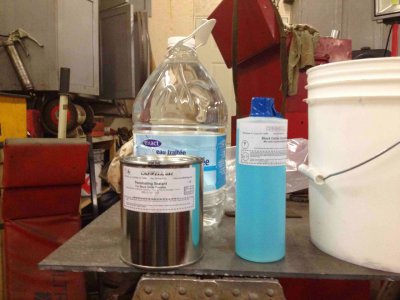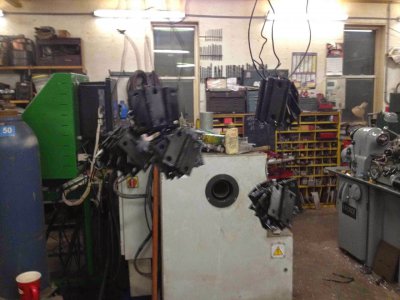- Joined
- Nov 16, 2012
- Messages
- 5,596
OK, someone emailed me with questions/concerns so let me clarify...
The threaded rod and the torque nuts are grade 12.9, 4140 heat treated. I jumbled a sentence down below. Yes indeed, normal threaded rod like you buy at the hardware store would not have a candle's chance in a windstorm to stand-up to mill table clamping pressures... Simple threaded rod is usually grade 2 or metric 5.5.
Also, yes, this is for a PM45/932 mill which uses 12mm studs and 14mm slot width. The threaded rod was (as I recall) 20 bucks for 1 meter and the torque nuts came in packs of 20 or 25 and cost about 8 bucks a pack.
1:3 mixture means: Take 1 part of the concentrated etching/oxide solution and 3 equal parts of distilled water. I think it's important to use distilled water as I recall getting weird results using tap water. The instructions in the chemical kit do not specify heating the parts but, those are tricks I figured-out along the way.
-Sorry about the confusion...
Ray
The threaded rod and the torque nuts are grade 12.9, 4140 heat treated. I jumbled a sentence down below. Yes indeed, normal threaded rod like you buy at the hardware store would not have a candle's chance in a windstorm to stand-up to mill table clamping pressures... Simple threaded rod is usually grade 2 or metric 5.5.
Also, yes, this is for a PM45/932 mill which uses 12mm studs and 14mm slot width. The threaded rod was (as I recall) 20 bucks for 1 meter and the torque nuts came in packs of 20 or 25 and cost about 8 bucks a pack.
1:3 mixture means: Take 1 part of the concentrated etching/oxide solution and 3 equal parts of distilled water. I think it's important to use distilled water as I recall getting weird results using tap water. The instructions in the chemical kit do not specify heating the parts but, those are tricks I figured-out along the way.
-Sorry about the confusion...
Ray




